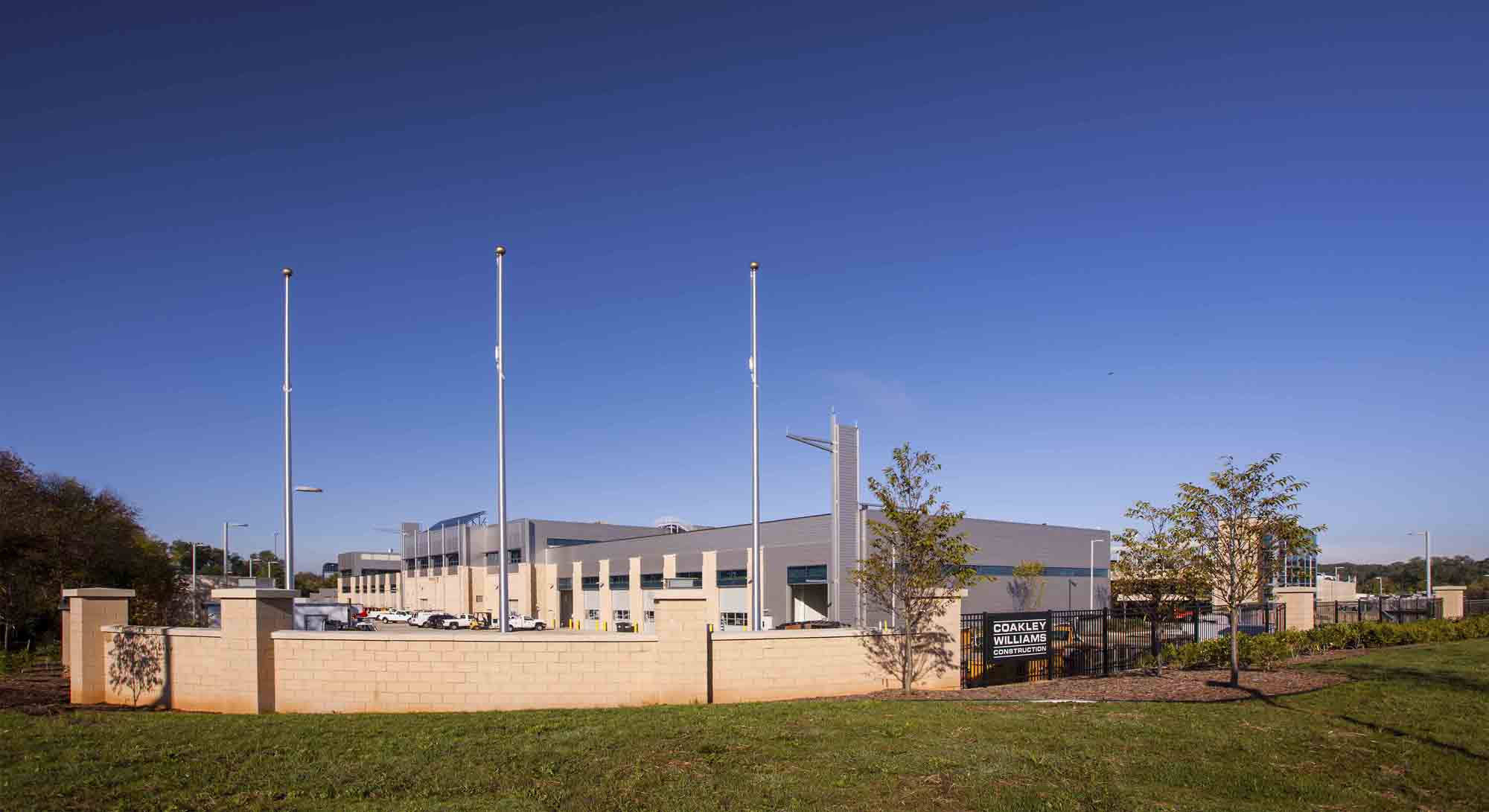Opened October 2013 after an18-month construction period, on January 28, the WBC Regional Development Committee toured Montgomery County’s $80 million relocated, greened, and modernized Equipment Maintenance and Transit Operations Center (EMTOC). Mike Gomez, Senior Project Manager for Coakley Williams Construction Company, the General Contractor, provided an overview presentation with Montgomery County Department of General Services (DGS) Project Manager, Rassa Davoodpour. Following the presentation, DGS Feet Management Services Chief Bill Griffiths gave the committee an eye-popping tour of the Fleet Services portion of the EMTOC complex.
This visit dove-tailed an earlier Montgomery County DGS presentation to the Regional Development Committee about the county’s Smart Growth Initiative. Montgomery County needed to replace its then existing EMTOC to make room for a new transit-oriented development adjacent to the Shady Grove Metro Station. A major aspect of the Smart Growth Initiative was that it be revenue neutral, meaning that the private development would pay for the program.
The EMTOC project is a collection of 13 buildings that serve the Department of Transportation’s divisions of Transit Services and DGS Highway Services. The facilities include: administrative buildings; bus parking for 200 buses; bus service lanes; a bus wash facility; a fare collection area; bus service maintenance bays; a parts room; a heavy equipment storage shed; a soil/gravel storage area; Highway Services bays; a compressed natural gas fast-fill facility, gasoline and diesel fueling stations; and employee and visitor parking.
Project challenges included: a reduced acreage from the pre-existing EMTOC site, modernizing support systems, coordination with the adjacent Washington Grove community, and satisfying LEED (Leadership in Energy and Environmental Design) Gold standards. The new EMTOC site is nestled on two adjacent sites separated by Interstate 370, the team used urban planning concepts to create a high-density building footprint, stacking the administration and operations areas above the maintenance bays, and staff parking above heavy vehicle and transit parking. This stacking approach maximized green space and minimized the impact on the surrounding wetlands, also creating a more efficient and effective circulation layout.
Space-saving vehicle maintenance system technologies played a critical role economizing on space requirements, such as Kardex vertical lift module, automated stack warehouse systems, and vertical carousel tire storage racks to reduce space while increasing operational efficiency. According to Bill Griffiths, these systems saved some 80% on square footage while also improving labor efficiency and ergonomics.
As with all other projects recently visited by the Regional Development Committee, Building Information Modeling (BIM) facilitated coordination between prime, subs, and the client. Along with on-site engineers and commissioning meetings, BIM provided time-critical resolution of issues as they arose. Rassa Davoodpour and Mike Gomez said that on-site coordination with BIM greatly help to account for a team spirit throughout construction.
That team spirit and the use of BIM was also partially responsible for smooth community relationships with the notoriously active Town of Washington Grove. Coakley Williams and the county provided on-going community meetings and site visits that brought community support as BIM provided a clear understanding of issues and helped to resolve visual, noise and aesthetic impacts.
Meeting the standards for LEED Gold certification meant maximizing environmentally-sensitive design and building efficiencies. Many acres of green space provide for stream buffer protection and forest conservation. The overall project was built to achieve a Gold certification by incorporating innovative features. As a pilot project, which is the first in the State of Maryland, reclaims, treats and reuses rainwater for toilet flushing and bus washing, reducing water use by 80 percent. Seventy-five percent of the building roofs, more than four acres, have green roofs to decrease stormwater runoff.
Other green features include: 100 percent of average annual rainfall treated by storm filters; efficiency features are expected to reduce energy costs by 30 percent compared to typical buildings; solar lighting on the parking roof; reuse or recycling of 75 percent of construction and land debris; exterior lighting that fully complies with LEED; low flow plumbing fixtures save 30 to 40 percent of water use; equipment and refrigerants that minimizes emissions; use of low emission and regional construction materials; purchase of Renewable Energy Credits; active and passive noise reduction measures; and low maintenance landscaping.

Photo by Jeffrey Sauers, commercialphoto.com
